Based on the Panzer II
The Wespe was officially called "10.5 cm Leichte Feldhaubitze 18 auf Fahrgestell Panzerkampfwagen II" by the Waffenamt, but known by every foot soldier as the "Wespe" ("Wasp"). This self-propelled artillery was the most famous and durable in service in the German Army throughout the war, but not the most produced. This title belonged to the bigger Hummel, fitted with a 150 mm (5.9 in) howitzer. It began as a paper project when it became clear, after the reports following the Battle of France, that the Panzer II was not suitable as a frontline tank anymore, lacking the armament and protection required to face the new generations of AFVs.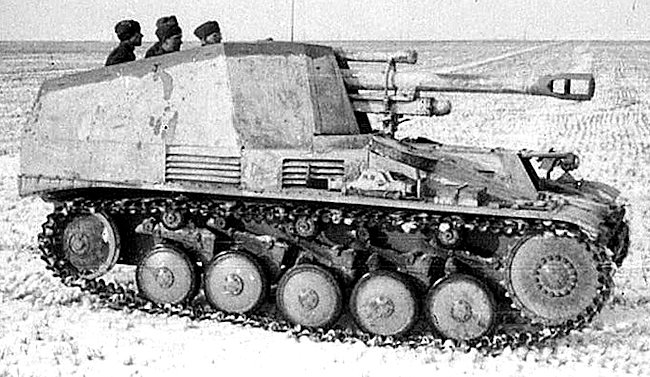
10.5 cm Leichte Feldhaubitze 18 auf Fahrgestell Panzerkampfwagen II Wespe on the Eastern Front in winter. (Photo - US NARA Kriegsberichter Archive)
At the end of 1941, Alkett designed a conversion based on the Panzer II Ausf.D/E (Christie suspension), the Marder II (Sd.Kfz.132). By the beginning of 1942, the same conversion was applied to the Panzer II Ausf.A-C (Sd.Kfz.131). An idea to adapt a standard 105 mm (4.13 in) howitzer to the same chassis appeared, giving a perfect match for the mobility of the Panzerdivisions and providing the required indirect artillery support, complementary to the Stukas.
Design by Alkett, production by FAMO
Alkett's engineers became famous after designing and producing a large number of conversions of various tank platforms as SPGs of all kinds, alongside FAMO, MAN and others. They choose the Ausf.F chassis for conversion, which provided most of the mechanical parts. But, contrary to the Marder series, Alkett choose to put a counterweight for the massive recoil and the engine itself was relocated to the front, while the fighting compartment was shifted to the rear. The engine exhausts were placed under it. The frontal glacis was redesigned and well-sloped and the chassis was lengthened to the rear to make room for the common 10.5 cm (4.13 in) leFH 18 howitzer built by Rheinmetall-Borsig.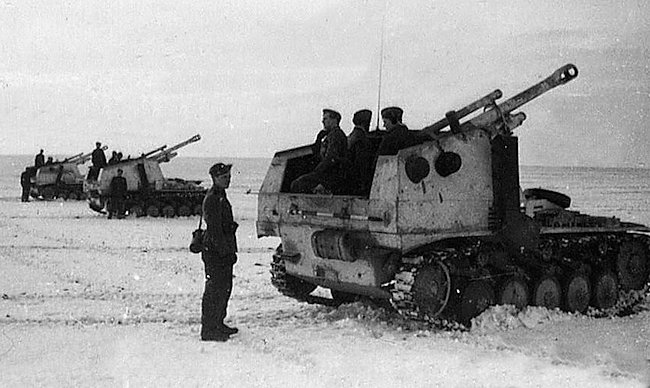
A Wespe German artillery Batterien (battery) normally had six vehicles. An Abteilung (Battalion) was comprised of three batteries: two with Wespes and the third with Hummels (Photo - US NARA Kriegsberichter Archive)
The superstructure was also model-specific, well sloped, but only 10 mm (0.39 in) thick and with an open top. The suspension was reinforced, in order to cope with the stress of the recoil, and the space between the last roadwheel and the idler was widened. The driver compartment was at the front and fully enclosed. The ZFA SSG 46 Aphon gearbox (6 forward and 1 reverse) served the same Maybaych six-inline engine fed by two 140 liters fuel tanks. The weight rose to 11 tons, but the speed was maintained to a maximum of 40 km/h (24.85 mph). There was also a FuG Spr.f radio inside the hull.
After Alkett produced a prototype for tests in late 1942, FAMO's Ursus plant in Warsaw was charged with the design. On the 14th of July, 1942, the Panzer-Kommission approved the concept and Hitler confirmed an order for 1000 on the July 25. But the production only began in February 1943 and lasted until June 1944, when the main factory was captured by the Red Army. In total, 676 were delivered by Ursus - Fahrzeug und Motorenbau (FAMO) of Breslau (Wroclaw) and Vereinigte Maschinenwerke/Famo Warschau in Poland.
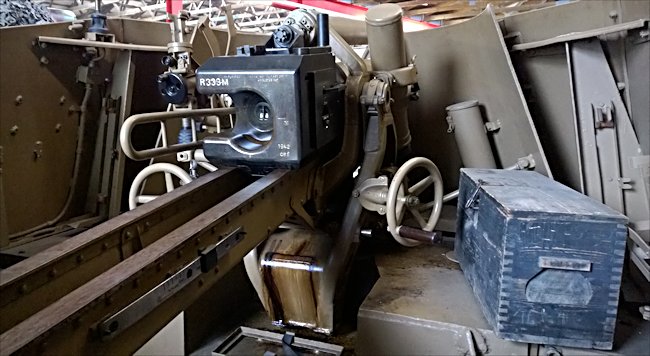
The German Army's Wespe SPG's 10.5cm artillery howitzer
Main variant: The ammunition carrier
Since the Wespe was cramped and could only carry limited ammo, the Munitionschlepper auf Fahrgestell Panzerkampfwagen II, or more simply "Munitionschlepper auf Wespe", was designed as a weaponless variant, entirely filled with storage boxes containing 90 105 mm (4.13 in) shells, to complement the limited supply of regular Wespes (32 rounds). 159 were built in all, by the same manufacturer, and two were attached to each unit (Abteilung) of six Wespes. The modifications were modular and each could be converted in the field to a regular SPG at a moment's notice.
Wespe SPG ammunition carrier captured by Free French fighters 30th August 1944
It must be noted that, before the Wespe, another SPG was based on the Panzer II chassis, the rare (only 12 built) 15 cm (5.9 in) sIG 33 auf Fahrgestell Panzerkampfwagen II (Sf) which fought in North Africa. The old, but still efficient, 150 mm (5.9 in) was much heavier and in order to cope with that the superstructure was lowered considerably, exposing the crew to small arms fire.
The "Wespe" in action
The biggest part of the Wespe production went on the Eastern Front and the first Panzerartillerie Abteilung equipped with this vehicle appeared in March 1943. They saw extensive service alongside the Hummel, first at Kursk, then with all three Eastern fronts groups. They were so successful that, after reading reports, Hitler ordered all other conversions based on the Panzer II chassis to be stopped and all work to go on the Wespe. By the summer of 1944, some Abteilungen were sent to Normandy as reinforcements. They fought in Italy as well, taking part in the pounding of Allied forces in the Anzio pocket and defending the Caesar and Gustav lines. No less than 36 Panzer divisions, including SS and special units, received Wespes, seeing active service on all fronts after 1943. The authorised establishment of the Panzer Artillery Regiment of the Heer Panzer Division that took part in the Battle of the Bulge, Ardennes Offensive in December 1944 had three Abteilungs (Battalions). The second and third battalion comprised of towed 10.5cm, 15cm and 17 cm Howitzers but the first battalion was equipped with artillery self-propelled guns.1.Abteilung (1st Battalion)
Stabskompanie (HQ company)
1.Batterien (6x Wespe 10.5cm Artillery SPG)
2.Batterien (6x Wespe 10.5cm Artillery SPG)
3.Batterien (6x Hummel 15cm Artillery SPG)
By March 1945, 307 were still in service. The crews praised its reliability and mobility, but despised the lack of protection, both in thickness and height. The fighting compartment was also very cramped. The loaders working at the back end of the superstructure were the most exposed.
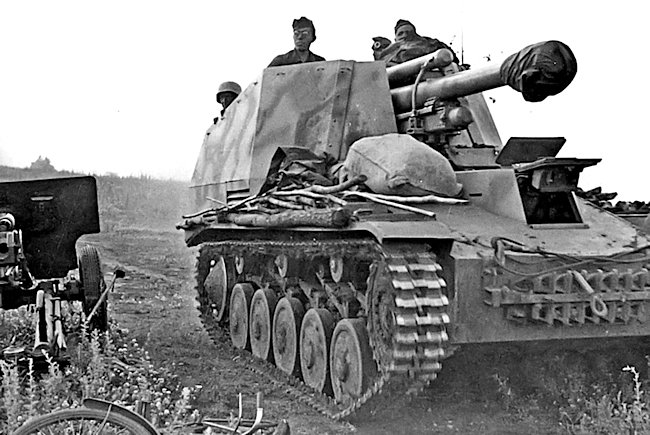
Wespe 10.5cm SPG of the 2nd Panzer Division during Operation Citadel
Surviving Wespe SPGs
German Panzer Museum Munster, GermanyMusée des Blindés, Saumur, France
Kubinka Tank Museum, Russia
Wreck - Battle of Normandy Museum, Bayeux, France
2x Wreck - André Becker Collection, Belgium
Wespe specifications |
|
| Dimensions | 4.81 x 2.28m x 2.30 m (15ft 9in x 7ft 6in x 7ft 7in) |
| Total weight, battle ready | 11 tonnes (12.12 tons) |
| Crew | 5 (driver, commander, gunner, two loaders) |
| Propulsion | Maybach Maybach HL 62 TR 6 cylinder, water-cooled 6.23 litre 140 hp gasoline/petrol engine |
| Speed (on/off road) | 40/20 km/h (25/12.5 mph) |
| Maximum range (on/off road) | 220/140 km (135/85 miles) |
| Armament | 10.5 cm leFH 18/2 L/26 (early) or L/28 (late) 7.92 mm (0.31 in) MG 34 |
| Armor | Front 20 mm (0.78 mm) Lower hull 30 mm (1.18 in) Sides 15 mm (0.59 in) Superstructure 10 mm (0.39 in) |
| Production | Total 676 |
Sources
Panzers in The East - Decline and Defeat 1943-45Wespe - German Self-propelled Artillery in World War II by Joachim Engelmann
The Ardennes Offensive - V Panzer Armies - Central Sector by Bruce Quarrie
Wespe SPGs on Wikipedia
Wespe SPGs on Tank-Hunter.com

Wespe from the 2nd Panzerartillerie Regiment, Russia, June 1944 - HD picture.
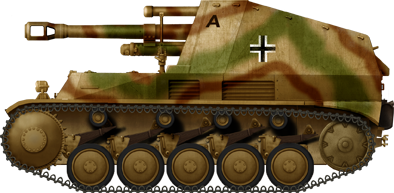
Wespe from the 146th Panzer Artillerie Regiment, PanzerLehr Regiment, Normandy, summer 1944.
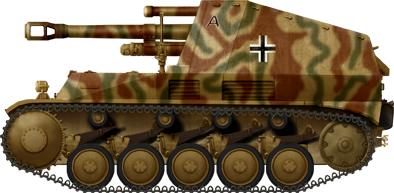
Wespe from the 1st Abteilung, Panzerartillerie regiment, 8th Panzerdivision, Ukraine, summer 1944.
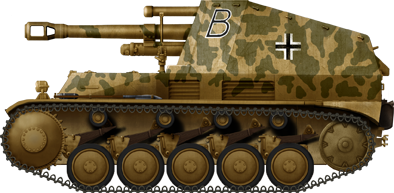
Wespe from an unidentified unit, Italy, summer 1944.
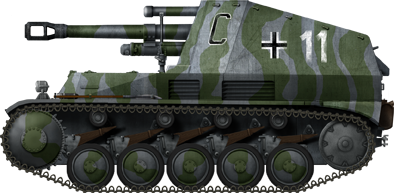
Wespe from an unidentified Abteilung, perhaps part of the Hermann Göring Panzer Division, Anzio, January 22, 1944.
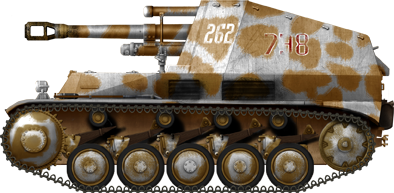
Wespe of an unidentified unit, Hungary, March 1945.
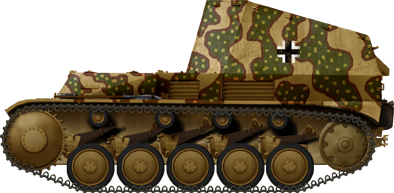
Munitionschlepper auf Wespe, Fallschrimpanzerdivision Hermann Göring, East Prussia, winter 1944-45.
Gallery
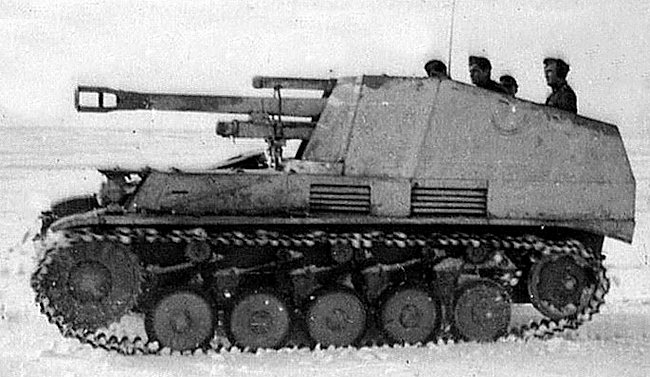
10.5 cm Wespe artillery SPG with 5 man crew on the Eastern Front in winter (Photo - US NARA Kriegsberichter Archive)
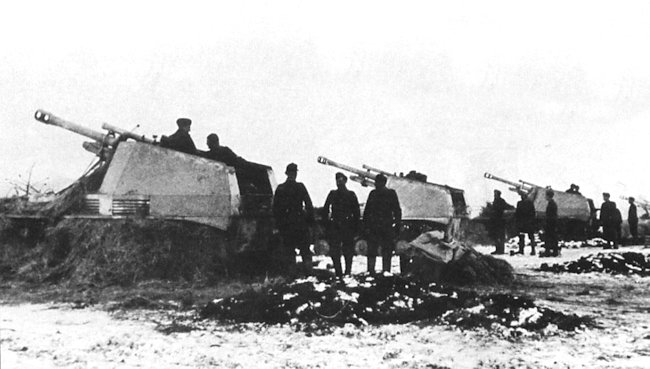
The problem of having a small combat compartment meant that three out of the five Wespe SPG crew members had to perform their duty outside the vehicle when the gun was fired.
Surviving Wespe SPGs
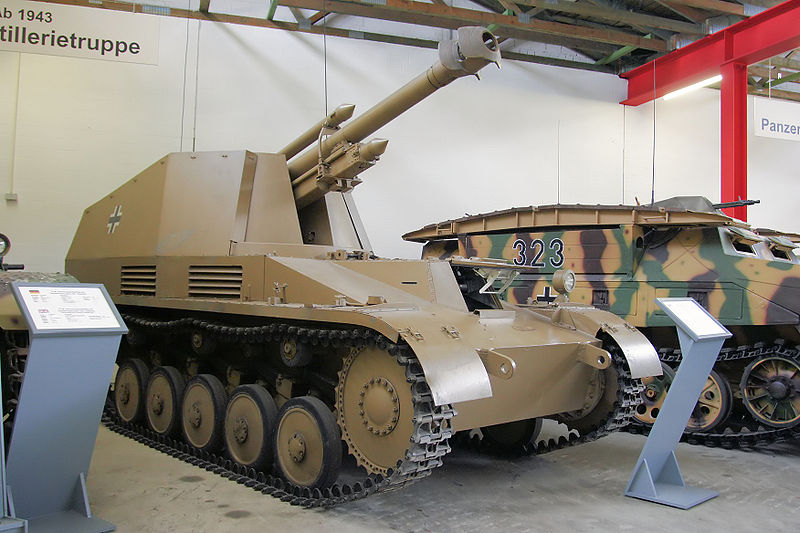
Preserved Wespe Sd.Kfz.124 at the Deutsches Panzermuseum, The German Tank Museum in Munster, Germany
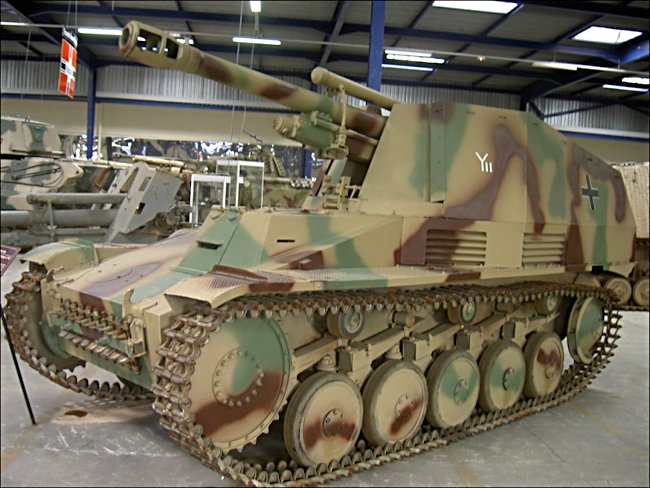
Wespe SPG at the Musée des Blindés, The French Tank Museum in Saumur, France
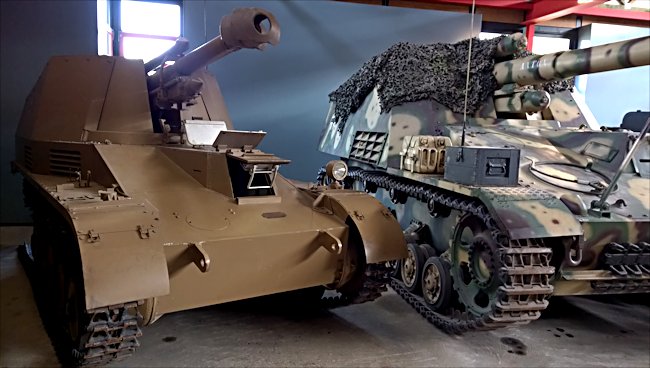
Wespe 10.5cm SPG on the left next to the larger Hummel 15cm SPG at the Deutsches Panzermuseum, The German Tank Museum in Munster, Germany
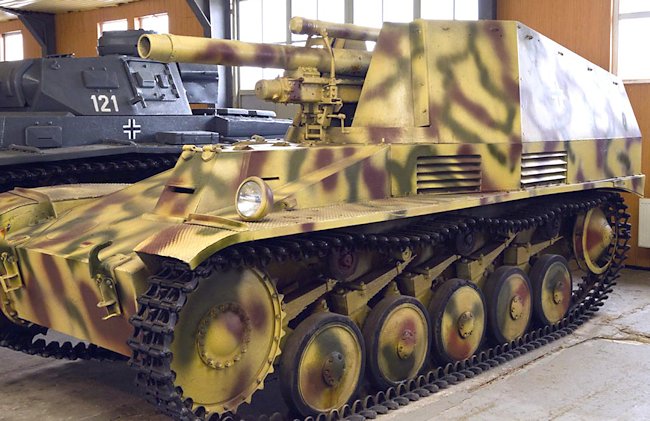
Wespe 10.5cm SPG at the Russian Tank Museum in Kubinka, Russia

WW2 Tanks




























WW2 tanks posters

All Tiger tanks liveries.

Panther liveries and variants

WW2 Armour - All tanks











Tanks aces and single tanks series

Find more there

Museums, Movies, Books & Games
The Tanks and Armor in pop culture
Tanks and armored vehicles in general are only really grasped when seen first person: The mass, the scale, it's all there. Explore also the way tanks were covered in the movie industry, in books and in video games.Movies:
Best tanks movie on warhistoryonline.com
On imdb.com
On bestsimilar.com/
miltours.com
liveabout.com/
watchmojo.com
Video Games:
pcgamesn.com
historyhit.com
levvvel.com
vg247.com/best-tank-games
mmobomb.com/
alienwarearena.com

